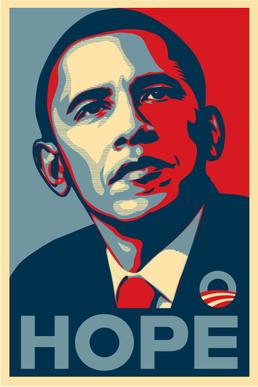When President Obama ran for his first election, his campaign
was spearheaded with a concise message. His posters, his speeches, and his
supporters proclaimed two things: “Hope” and “Change.”
Image from linkedin
This whole campaign exuded an air of hope and possibility. With positive campaign slogans that seemed to cover all the possible issues (albeit by being very vague), Obama’s campaign reached out to the voters of America.
For any problem there was “hope” for a better future, and by
electing Obama “change” will happen.
The effectiveness behind this campaign was it empowered the
people. Given the setting of the 2008 election when the economy was struggling,
the war on terror was dragging on, and everything seemed dark and depressing.
Then from the Democratic Party came a congressman proclaiming that there was
hope. Furthermore, Obama was different from all the previous presidents. As the
first African American on the ticket, Obama not only promised change, but appeared
as a change from the norm himself.
The other part that made Obama’s campaign quite successful
was his use of the internet and technology to connect with the voters. By 2008,
the internet had come a long way since the last election of a new president.
Heck, it even came a long way from 2004. This change a whole new media to campaign
on.
Paper campaigns were very limited and often left the voters
disconnected from the candidate. Travelling campaigns were better at forming a
connection with the public, yet one candidate could only be in one place at one
time. Television and radio campaigns eliminated the location restriction but
came with the downside of time restriction as broadcasts can only air at
certain times. With the internet, the campaign can reach anyone with connection
anytime at all. This greatly increased the candidate’s connection with the
voters and made it so much easier for messages to be spread.
Obama did an excellent job of utilizing the internet in his
campaign. His campaign slogans and chants were short and concise, allowing for
easy understanding by the attention deficit internet users we are. Furthermore,
they fitted easily into Twitter messages and Facebook posts without becoming a
wall of text.
Although most of the strength of Obama’s campaign came from
his internet presence, the above picture shows one of his famous posters. This simple
palette and short message quickly became iconic.
However, his second campaign did not fare as well. He struggled to find a new unique message to convey. Regardless, the campaign's official slogan of "Forward" is still effective. It continues the message of the previous campaign and once again looks towards the future.


No comments:
Post a Comment